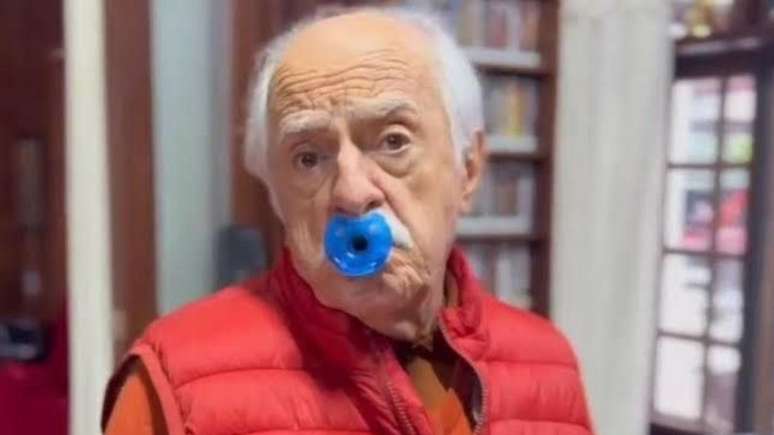President of the Brazilian Association of Plastic Surgeons shares recommendations for those who travel in the postoperative period
Many people choose to have plastic surgery done in the winter, after all, with a cooler temperature, recovery tends to be more comfortable. It is also estimated that it is in July, the month of the school holidays, that plastic surgeries are most sought after. But is it possible to perform surgery and then travel?
html[data-range=”xlarge”] figure image img.img-66ee7cd39d6943a1d92479a85f2cf7385srh407x { width: 774px; height: 516px; }HTML[data-range=”large”] figure image img.img-66ee7cd39d6943a1d92479a85f2cf7385srh407x { width: 548px; height: 365px; }HTML[data-range=”small”] figure image img.img-66ee7cd39d6943a1d92479a85f2cf7385srh407x, html[data-range=”medium”] figure figure img.img-66ee7cd39d6943a1d92479a85f2cf7385srh407x { width: 564px; height: 376px; }
“Patients are increasingly traveling to have plastic surgery in the city (or state) where their trusted surgeon works. Indeed, it will depend on the type of surgery, but it is essential to talk to the plastic surgeon and follow the postoperative guidelines, which require some special care,” explains Dr. Daniel Botelho, president of the Brazilian Association of Plastic Surgeons (BAPS).
Risks of bleeding and thrombosis in surgical interventions
There are risks with facial surgeries and bodily. Traveling by plane after rhinoplasty (nose surgery) or blepharoplasty (eyelid surgery), for example, can increase your risk of bleeding. “Matters such as cabin pressurization and body position can favor this picture. But it’s not common,” says the specialist.
Surgery on the body can increase the risk of thrombosis, when a clot forms within the bloodstream, which can break loose and cause a pulmonary embolism, which can be fatal. “Long journeys are contraindicated in these cases,” she adds.
The most recommended thing is that the return journey does not take place in the immediate postoperative period, within the following three days the procedure. “The longer the trip, the less recommended it will be in the first few days. The most prudent, in general, is for the patient to recover for up to three weeks in surgeries in large areas. The doctor is the one who can discharge the patient according to the intervention and the patient’s state of health”, explains Dr. Daniele.
Essential care while traveling after surgery
Within the period in which the doctor authorizes travel by plane or car, some precautions will be necessary for the recovery from the procedure to take place in the best possible way. BAPS advises that, in this case, the first step is to ensure it some family members or friend accompany the patient during the trip in order to offer the necessary support in case of any problem.
The companion, including, must prevent the patient from carrying the weight of the baggage. Wearing light clothes that do not compress the treated area and, if possible, opt for seats that allow you to fully recline the backrest or have plenty of legroom are two tips that can help.
Properly following medical guidelines is also essential. “It’s also important that you make it clear to your doctor that you will be flying or going on a long car ride after surgery, so that I can give you specific guidance for your case. For example, your doctor may prescribe a saline solution to avoid dry nose caused by air conditioning on an airplane or prescribe eye drops to improve the dry eye sensation common in people who have had blepharoplasty surgery,” explains Dr. Daniel.

Care during the journey
According to the BAPS president, during the flight or car journey, the patient is recommended to drink plenty of water and not to drink alcoholic and non-alcoholic beverages, as well as salty foods, in order to avoid dehydration and water retention. “A periodic realization doing light exercises to move the legs is also important, as it is the best way to prevent deep vein thrombosis, a very common disease in travelers due to standing still for a long time without moving the calf, which decreases the speed of blood inside the vases,” he explains.
Getting up every half hour to take a short walk down the aisle of the plane can help. “If you’re driving, the ideal is to make stops during this time and get out of the vehicle to stretch a bit,” she points out. “In some cases, compression stockings may also be indicated”, concludes Dr. Daniele.
Dressing maintenance
Finally, it is essential to avoid manipulating the operated area during travel, keeping the dressings always dry and well-fitting and the bandages and compression straps worn in the correct position. However, the specialist recommends talking to your doctor, as only he can offer the best guidelines for a trip. no hassles.
“In many cases, it will not even be possible to return to one’s hometown on the day of the procedure, as most surgeries require recovery time in the town where they were performed to maximize their safety and well-being.” concludes.
Source: Terra
Ben Stock is a lifestyle journalist and author at Gossipify. He writes about topics such as health, wellness, travel, food and home decor. He provides practical advice and inspiration to improve well-being, keeps readers up to date with latest lifestyle news and trends, known for his engaging writing style, in-depth analysis and unique perspectives.








